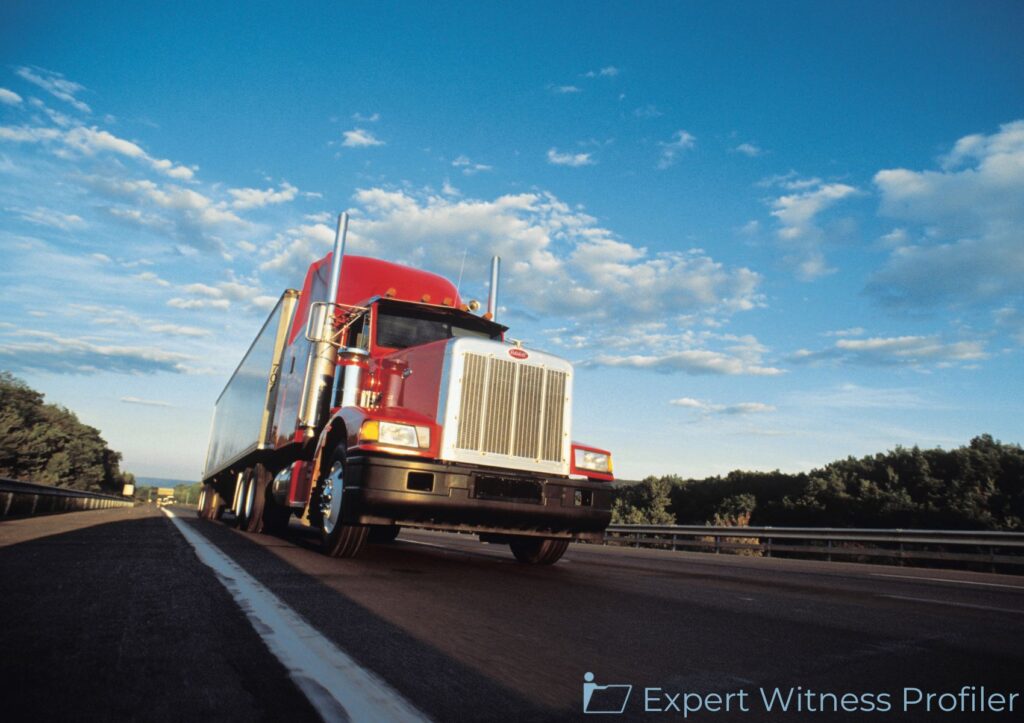Expert Testimony on Driver Hiring and Retention Practices Admitted
Posted on October 3, 2025 by Expert Witness Profiler
In July 2019, Plaintiff Amy Kessler was driving her car on Interstate 90 when she was rear-ended by a semitruck owned by Defendant McFarland Truck Lines, Inc. that, at the time, was being operated by Defendant Archie Gross within the scope of his employment with McFarland. As a result of the injuries she sustained in the collision, Kessler sued Gross and McFarland.
Kessler offered several opinions from her trucking expert, Walter Guntharp. With its motion to exclude, McFarland challenged those of Guntharp’s opinions that fell within the following three categories: accident causation, trucking industry hiring standards, and Gross’s driving history.

Trucking Expert Witness
Walter A. Guntharp has worked as a truck driver and a truck-driving instructor, and he has held multiple positions relating to safety in the trucking industry over the course of nearly fifty years.
Discussion by the Court
A. Accident Causation
Guntharp opined from his review of dashboard camera video capturing the incident that the accident was caused by Gross’s aggressive driving and failure to respond properly to the traffic conflicts produced by the construction zone. McFarland contended that Guntharp’s causation opinions must be excluded because he is not qualified as an accident reconstructionist and, even if he were, his causation opinions are not helpful to the trier of fact.
Although Guntharp is qualified to provide expert opinions on whether, in the lead up to the accident, Gross was driving in accordance with accepted industry safety standards, it did not follow that Guntharp also has sufficient expertise to opine on what caused Gross to collide with Kessler.
Even aside from Guntharp’s lack of expertise in accident reconstruction, the Court did not believe that his opinions on the cause of the accident would be helpful to the jury. In arriving at his conclusion that Gross’s unsafe driving was the cause of the crash, Guntharp relied mainly on the dashboard camera video of the accident. That same video will presumably be viewed by the jury. And Kessler will be free to offer Guntharp’s testimony about how Gross’s actions fell short of driving standards. But whether Gross’s substandard driving caused him to rear-end Kessler’s vehicle is a question better left solely to the jury. The jury is fully capable of considering the video footage in light of Guntharp’s testimony as to the applicable safe truck driving standards and determining causation for itself.
B. Trucking Industry Hiring and Retention Standards
To demonstrate that McFarland was negligent in hiring and retaining Gross as a truck driver, Kessler has offered several opinions from Guntharp about hiring standards in the trucking industry. McFarland challenged Guntharp’s qualifications to offer these opinions. Further, McFarland contended that Guntharp’s opinions on hiring and retention practices in the trucking industry are unreliable.
The Court concluded that Guntharp’s long experience in the trucking industry qualifies him to testify as to the industry’s practices for hiring and retaining truck drivers.
In attacking Guntharp’s methodology, McFarland focuses on his claim “that the standard in the trucking industry for hiring and retaining truck drivers is the ‘rule of three’: reasonably prudent motor carriers do not permit someone to drive a commercial motor vehicle if he has a combination of three or more moving violations and accidents in a three-year period.” McFarland contended that Guntharp’s assertion that the trucking industry adheres to a “rule of three” in hiring drivers is ipse dixit that lacks support from any reliable studies or data. The Court disagreed that Guntharp’s “rule of three” opinion is unsupported ipse dixit. Rather, Guntharp explained that his opinion is based on his years of experience in the trucking industry, as well as his review of the hiring and retention policies of thousands of trucking companies.
Finally, McFarland asserted that Guntharp’s “rule of three” is undermined by the data on which he relies. It highlighted how some of the trucking company policies that Guntharp reviewed do not automatically disqualify a driver whose preceding three-year record includes any combination of three moving violations and accidents but instead consider the seriousness of the accident or violation. However, that Guntharp’s “rule” might not be ironclad speaks to the correctness of his conclusions rather than the reliability of his methodology.
C. Gross’ Driving History
The final category of opinions that McFarland sought to exclude are Guntharp’s commentary on Gross’s prior accident history. Based on his review of Gross’s record of accidents and traffic violations, Guntharp opined that “Gross could not safely operate a commercial motor vehicle because of a lack of caution and attention while driving” and “routinely operated his truck in an aggressive manner that jeopardized the safety of others.” Kessler made no effort to defend these opinions. And the Court agreed that Guntharp’s characterization of Gross as an unsafe driver is pure ipse dixit. Rather than explain how the circumstances of each individual incident demonstrate Gross’s carelessness or aggressiveness, Guntharp seems simply to conclude that because Gross was involved in multiple preventable accidents and received multiple citations, he must have been an inattentive and overly aggressive driver.
Held
The Court granted in part and denied in part McFarland’s motion to exclude certain opinions of Kessler’s expert Walter Guntharp.
Key Takeaway:
The Court found that Guntharp is qualified to opine on driver hiring and retention practices in the trucking industry and employed a reliable terminology in concluding that trucking companies generally abide by a “rule of three” in considering a prospective driver’s history.
Case Details:
| Case Caption: | Kessler V. Gross Et Al |
| Docket Number: | 1:21cv3852 |
| Court Name: | United States District Court, Illinois Northern |
| Order Date: | September 26, 2025 |





